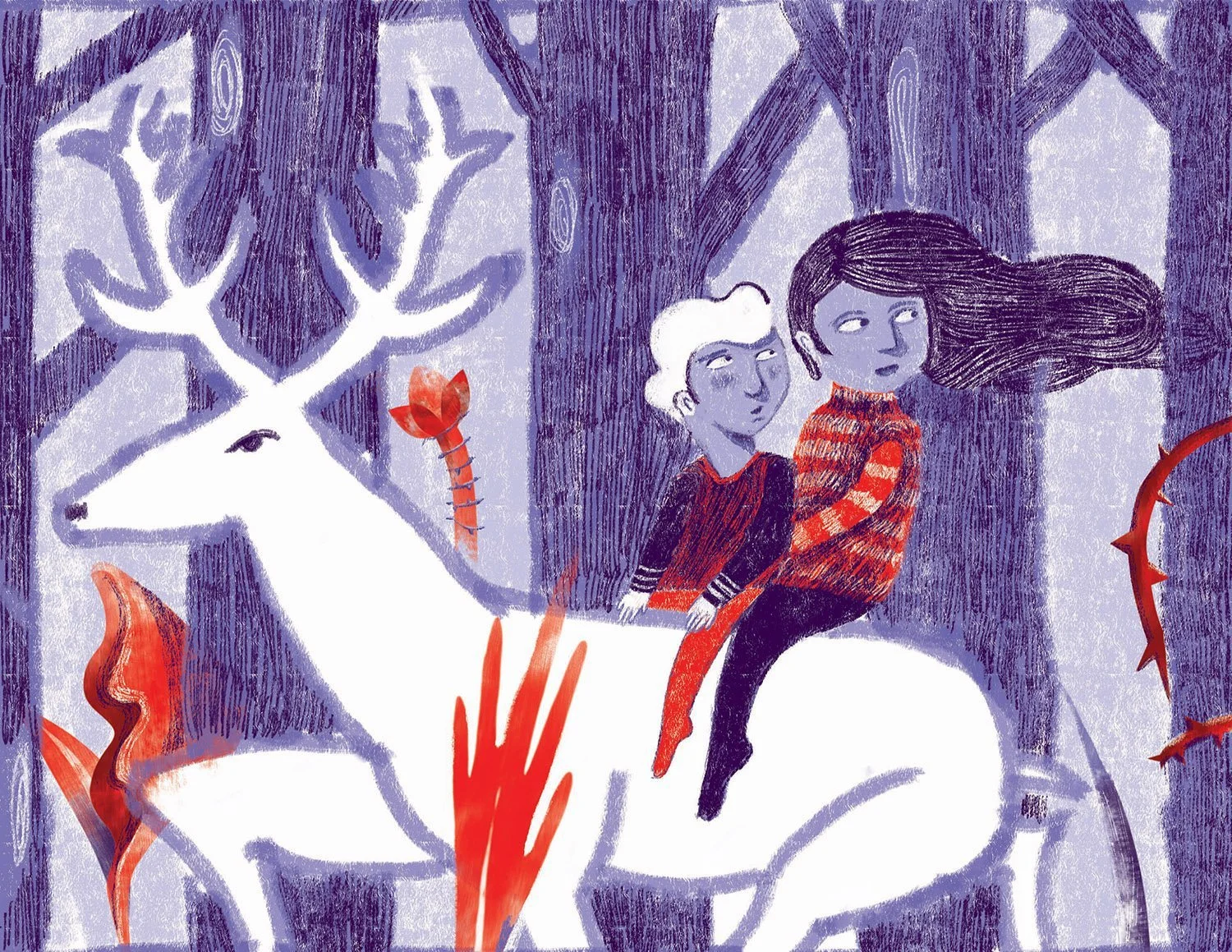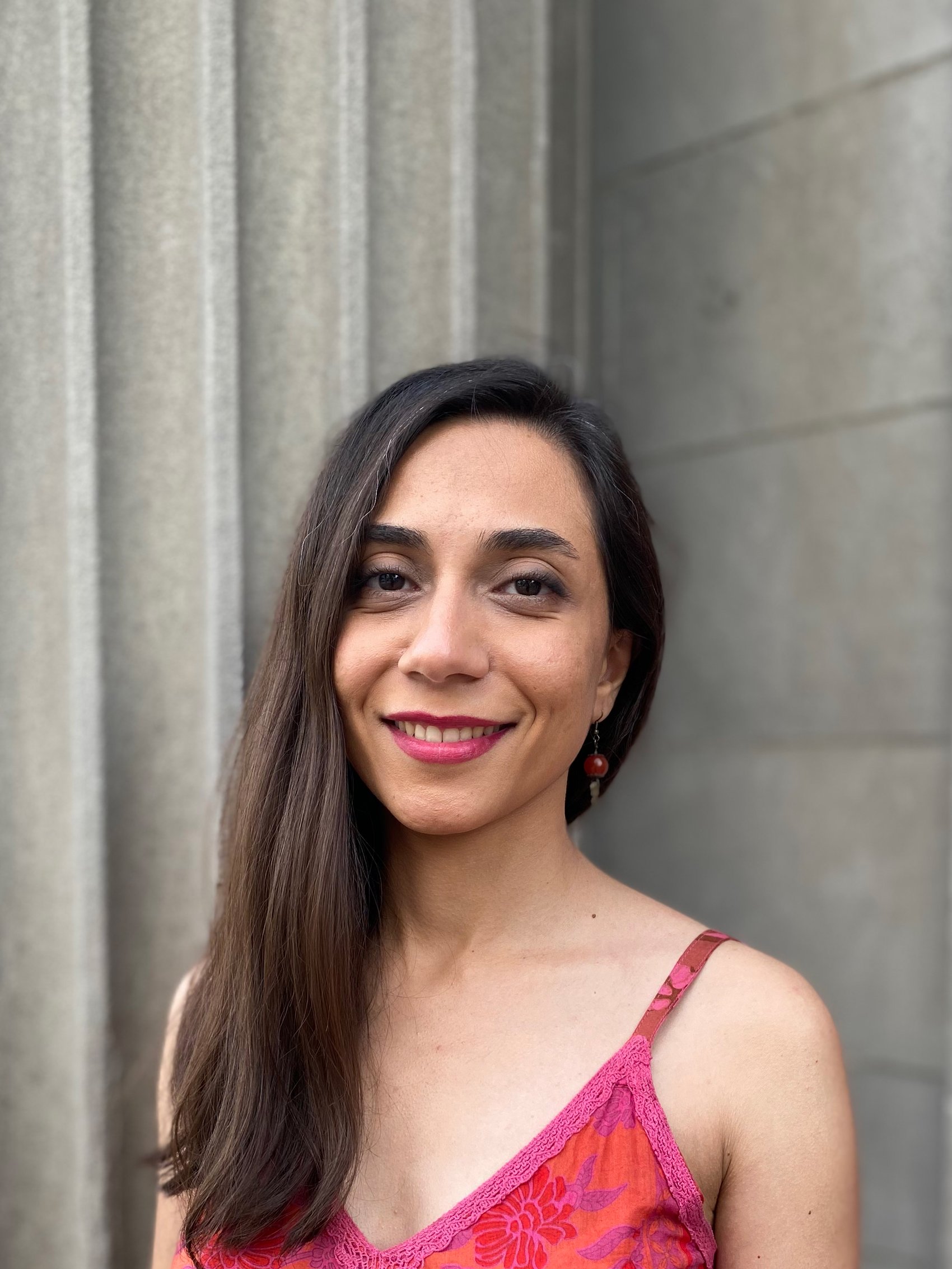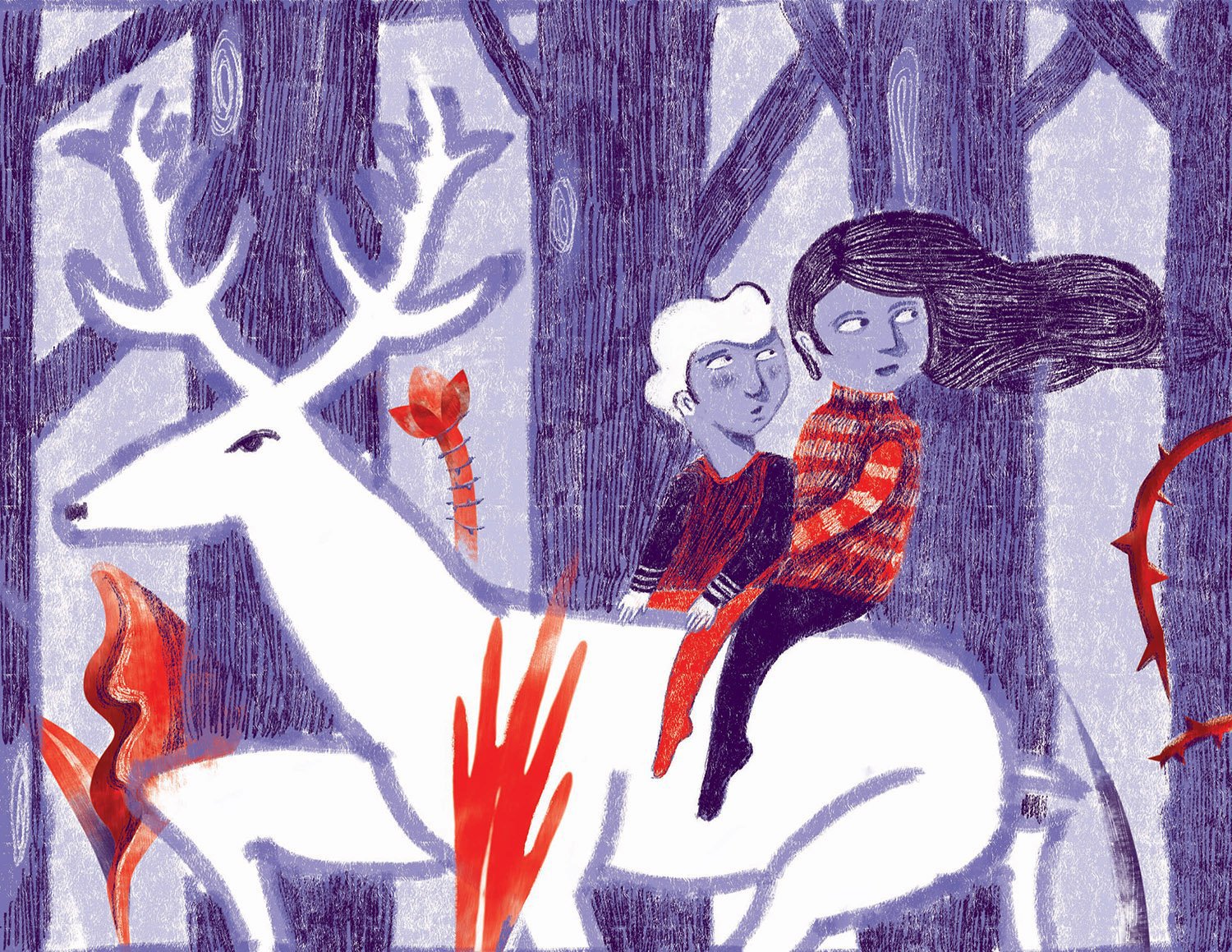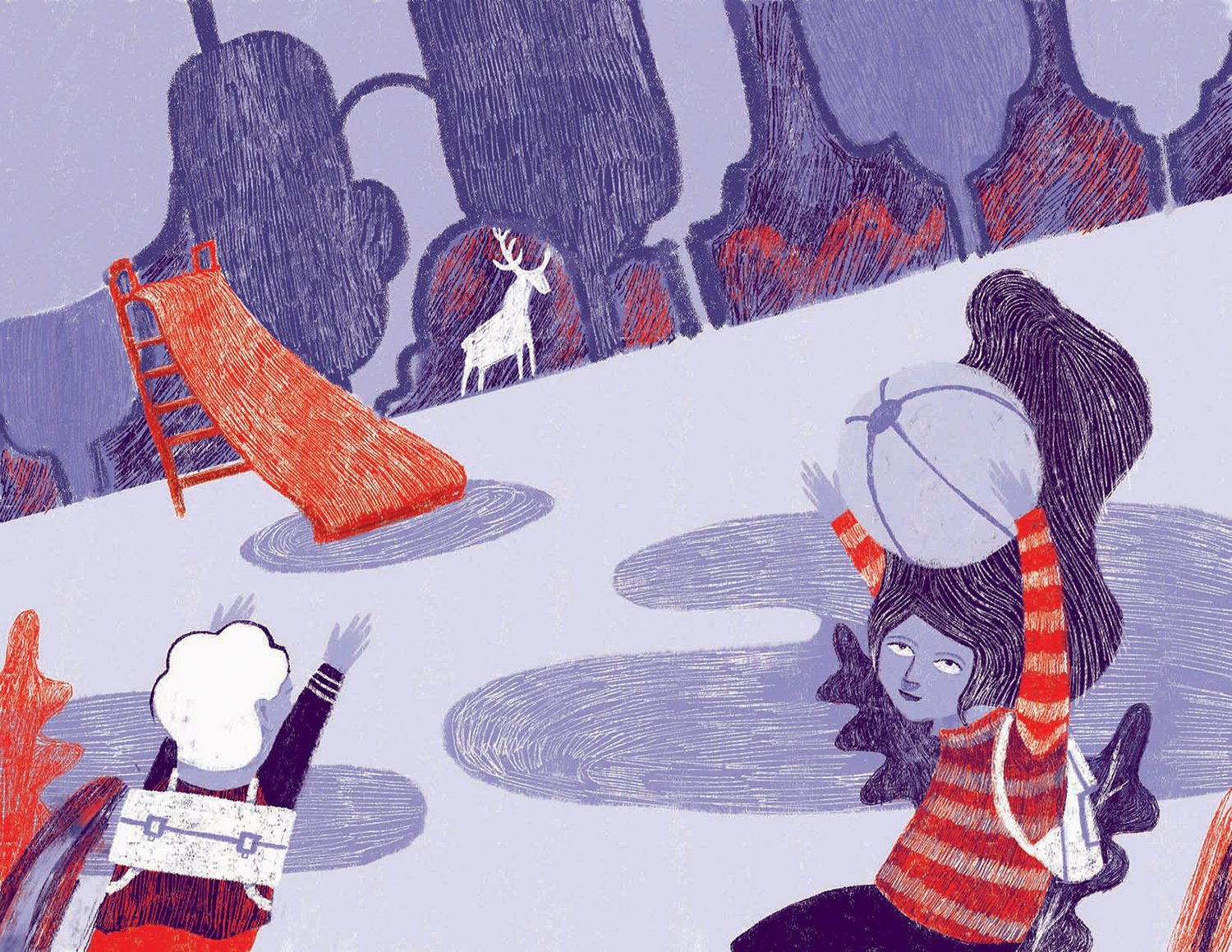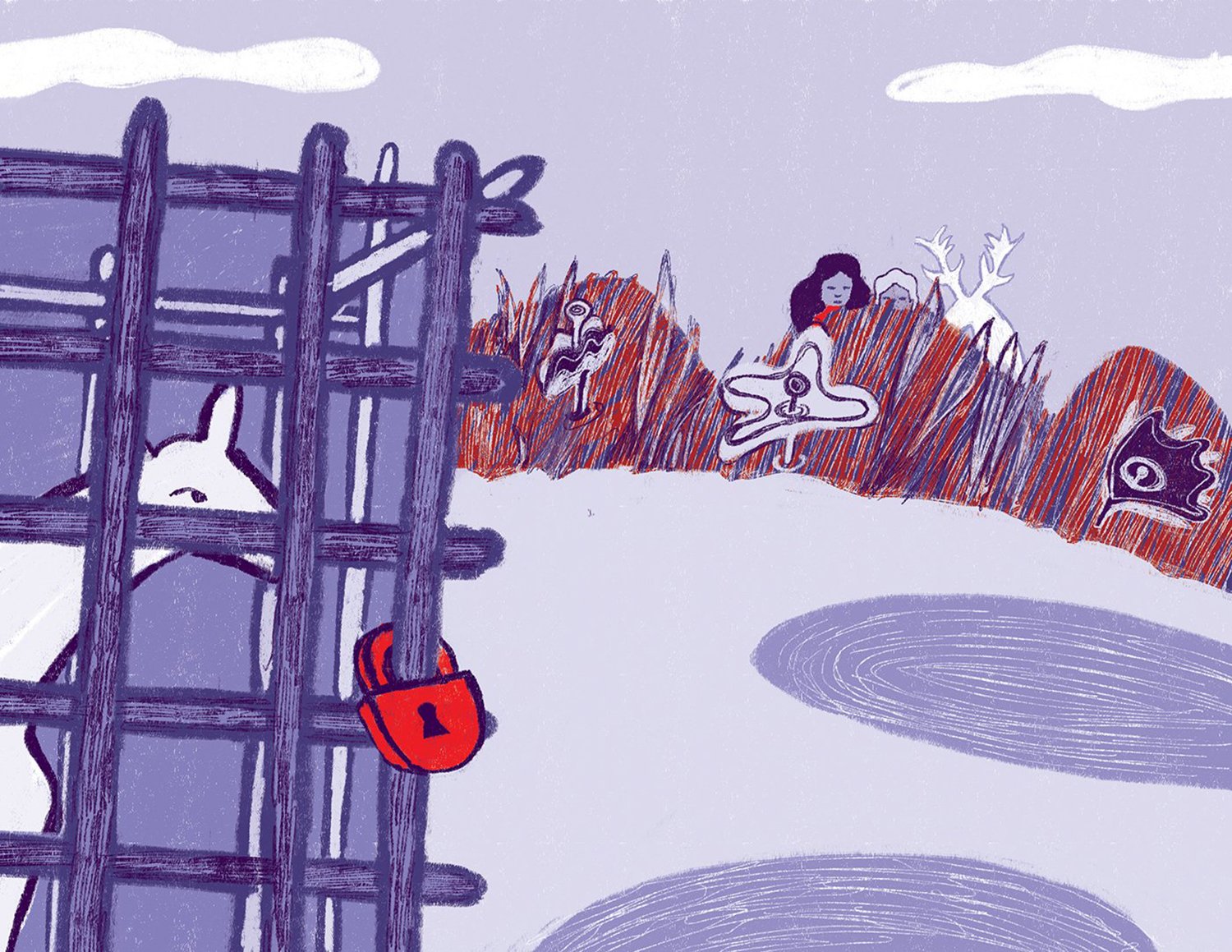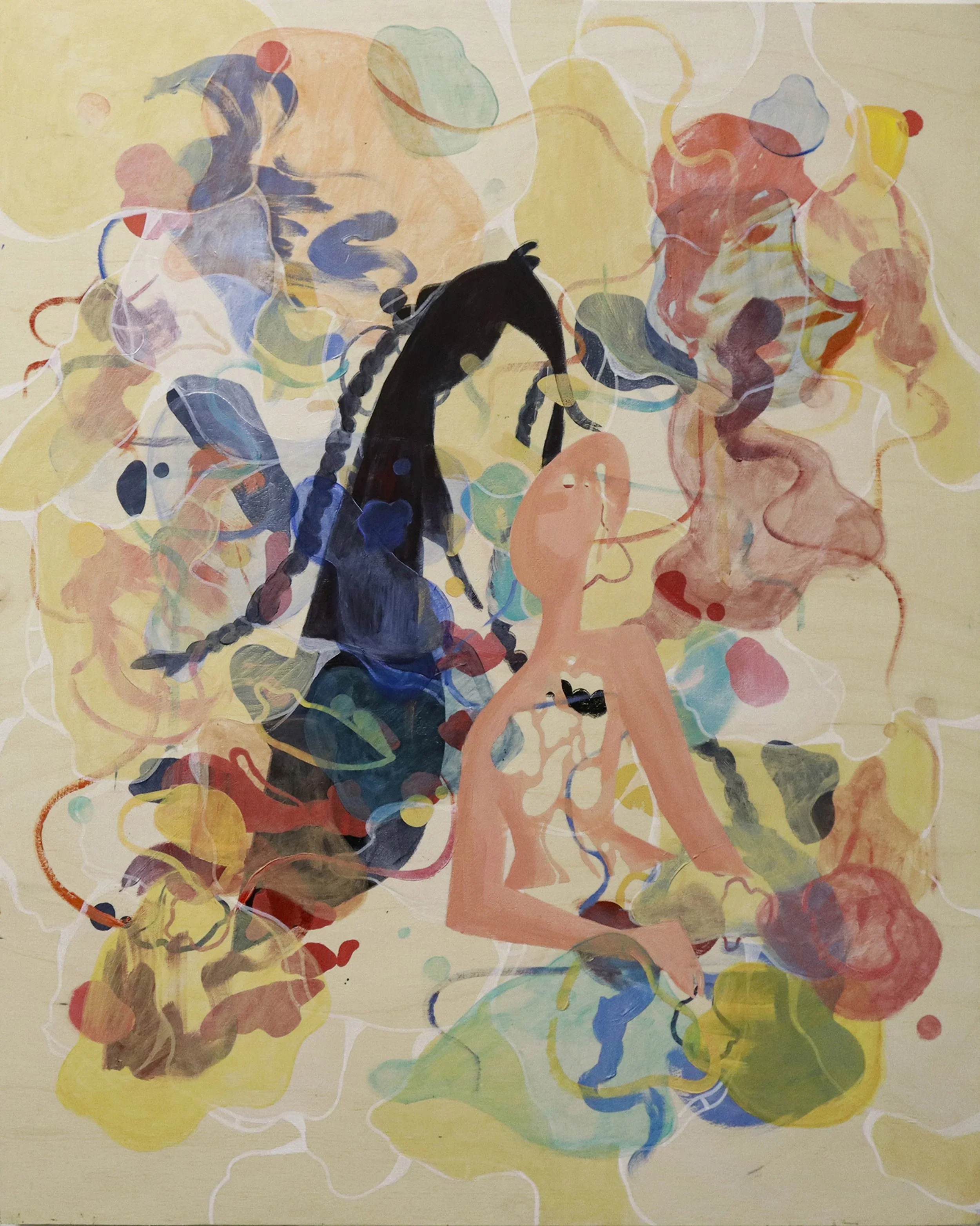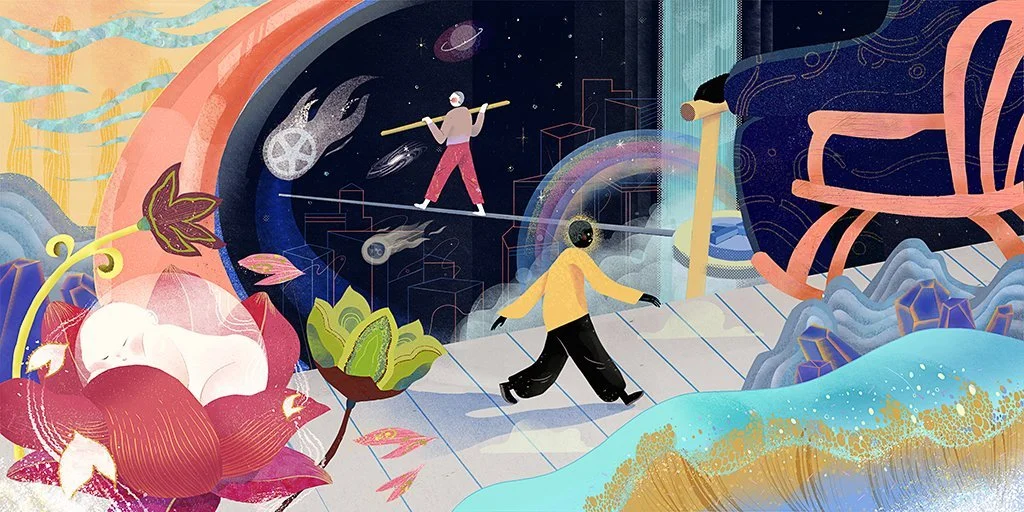10 Questions with Paria Peyravi
Paria Peyravi is an illustrator and designer from Iran. She received a BA in Visual Communication at the Art University of Tehran and an MFA in Illustration at Syracuse University. With a passion for storytelling, research, and imagination, she has explored different traditional and digital mediums and won many awards, including the Fine Work Prize of the "Japan Illustrators' Association" in 2018, the SCBWI Student Illustrator Scholarship (Summer Conference) in 2019, and the Runner Up Award of the Best Brand Award competition in 2021. She has also presented at the 18th International Congress of Qualitative Inquiry.
Paria Peyravi - Portrait | Ph. Neda Seyedsadjadi
ARTIST STATEMENT
When a story comes to an end, the storytelling begins. For a storyteller, it is only the beginning of imagination, exploration, and ideation. A new project is a new chance to discover an inner voice and the world outside. A new story is a chance to create an intersection of words, imagination, and perception.
The Key Story 10-7.7, Digital, 2019 © Paria Peyravi
INTERVIEW
You have an interesting career, and you have already won several prizes. Tell us more about you; how did you start working with illustrations? And when did you realize you wanted to follow this career path?
Like so many other artists, I started painting as a child. I was amused by hours of painting and picturing my dream world. Years later, I got accepted to the Visual Communication BA program at Tehran University of Art in 2010, and that was the start of my journey as a designer and illustrator. We had to work hard and go through serious critiques sessions. Besides the design classes, we had some illustration coursework, and that was the time that I started developing a great passion for illustration.
Tell us about your background. How did you develop into such a skillful illustrator?
After graduating from the Visual Communication BA program at Tehran University of Art, I started working as a designer, and besides that, I didn't forget about illustration. I had long hours of experimenting with different mediums in my room (which happened to be my studio at the same time). I used to look for interesting stories around the world and try to get inspired by them. My initial exploration was with traditional mediums like pieces of cardboard, ink, and acrylic, and I had the other half of the process done digitally. I even used to create my brushes in Photoshop by scanning the ink and acrylic effects on cardboard and paper. In 2017 I moved to the USA to study for an MFA in illustration, which was another turning point in my career.
What are your main sources of inspiration and visual references for your work?
To be honest, the main source is always imagination. When I read a text, the ideation starts, and then I look for techniques for my dreams to come true and get live on paper. Meanwhile, I have been drawing for years, which has helped me develop the skill to look at each object from a different angle. As an educator, I always encourage my students to look at everything from different views, specifically the ones that don't necessarily represent the subject at first sight.
The Key Story 10-7.7, Digital, 2019 © Paria Peyravi
The Key Story 10-7.7, Digital, 2019 © Paria Peyravi
In your statement, you talk about storytelling and its importance for your work. What are your preferred subjects? Do you have any recurring theme or subject you like to explore?
I started with various stories from all over the world, and then I started taking a look at my background, the Persian culture. I look for didactic stories which are successful at subtle communication of their messages. I pair with the stories that make readers question the world around them, become curious about incidents, and make them aware of their senses. The other factor that matters to me is diversity and inclusivity. I love the stories that introduce different cultures to their audience and involve them in their traditions, costumes, and narratives.
What about your colors? You seem to have a very distinctive palette; what do these colors represent for you? And how do you use them in your work?
I normally choose a limited color palette to help the viewer digest the image in a better way. This can reduce visual noises and clear the visual communication between the image and the reader. Illustrating with a limited palette is like telling a story with simple words. As an illustrator, I feel the mission is to depict everything in a way that is easier to understand.
The Key Story 10-7.7, Digital, 2019 © Paria Peyravi
What messages do you want to convey with your work? What kind of stories do you think pair better with your messages?
In my recent work, "The Story of Zal," I took a look at my Persian heritage to choose a story about diversity. Zal's story is adapted from a Persian myth and narrates the story of a child being neglected because of a different appearance. Learning about the differences should start from childhood and will be a long journey for all of us that will continue as adults.
Let's talk about new technologies. What do you think of NFTs? Are they just a trend, or are they here to stay?
The expansion of the digital world has already changed concepts and conventions like copyright, ownership, and sale of artworks. The emergence of NFTs is another step toward this ongoing change. It is all about accepting new shifts in the art world. I can't say that NFTs are here to stay or will expire soon, but the effects they have made in creating and selling artwork will last for a long time.
And what about digital exhibitions and presentations? Do you think they are a good way to promote your work as an illustrator?
Yes, I believe any presence, whether in the digital or the real world, will be effective to be seen as an illustrator. The reason for that is that illustrators can find clients both through websites and networking in in-person events and gatherings. But exhibitions, whether digital or in the real world, might not be the ultimate step for so many illustrators. Illustration can be close to design in the case of taking part in solving a client's problem, in a magazine, children's book, animated film, or advertising.
The Key Story 10-7.7, Digital, 2019 © Paria Peyravi
The Key Story 10-7.7, Digital, 2019 © Paria Peyravi
What is your ultimate career goal? Is there a brand or project you would like to collaborate with? Or a project you have been meaning to start?
I like to bring my illustrative skills to the digital world. One of the things that I mostly think about is how digital books can play a role as an educational component and how a designer or illustrator can contribute to that. These days I don't see myself limited to only picture books. Any toy, educational platform, or event can be a place for an illustrator to use their skill to communicate a message. My design skills also always help me not to limit myself and expand my opportunities.
Lastly, what are you working on now, and what are your plans for the future?
Exploring digital books is my new passion. Right now, I am mostly focused on considering readers' reactions to digital and collaborative book reading. I think about the future of education in the digital world and the role that an illustrator and designer might have in education and entertainment. Also, augmented reality is a new passion that I am exploring. Digitalization is an ongoing trend, and there are lots of possibilities for artists and designers to explore.

